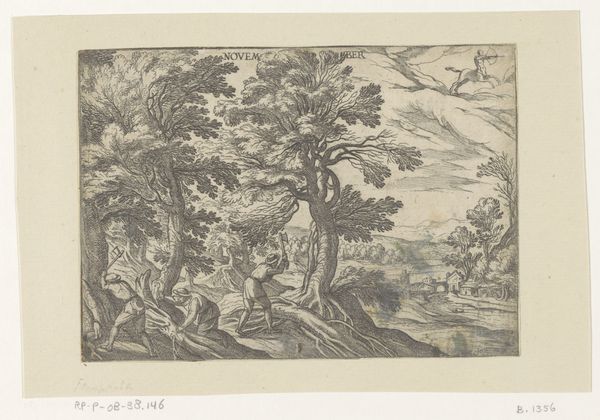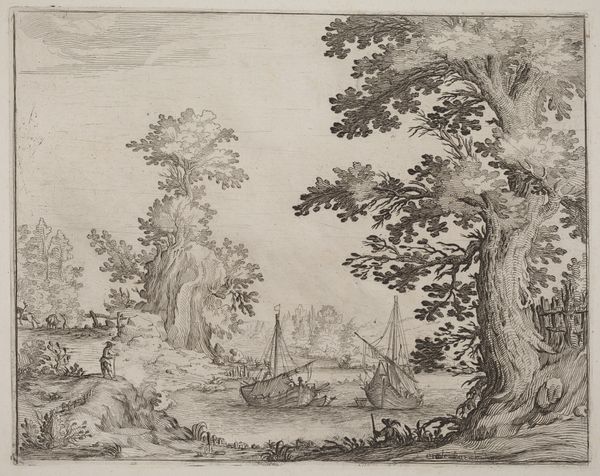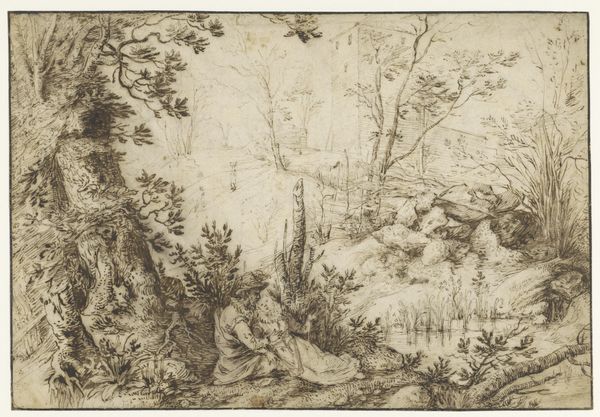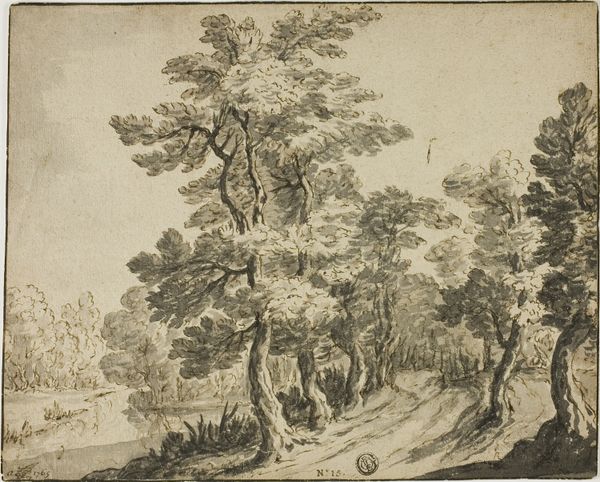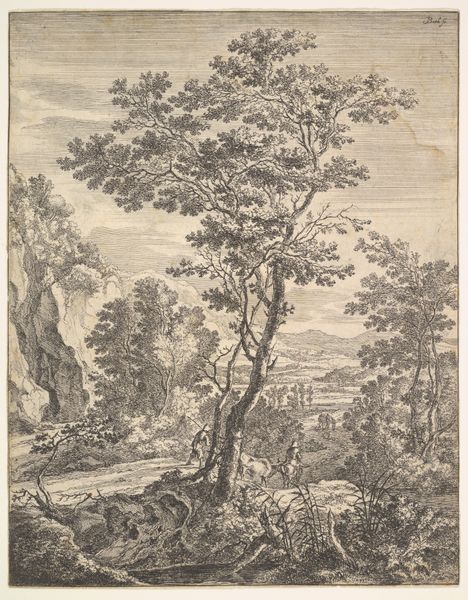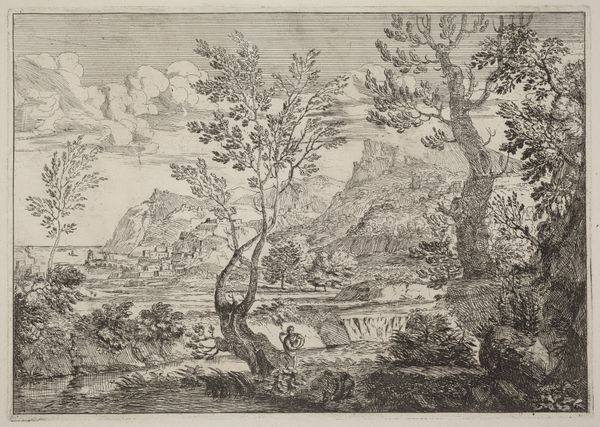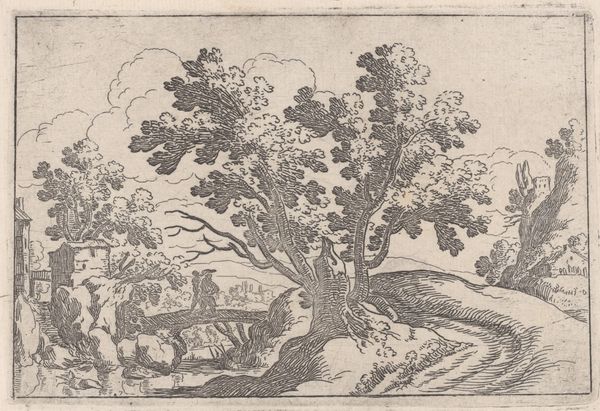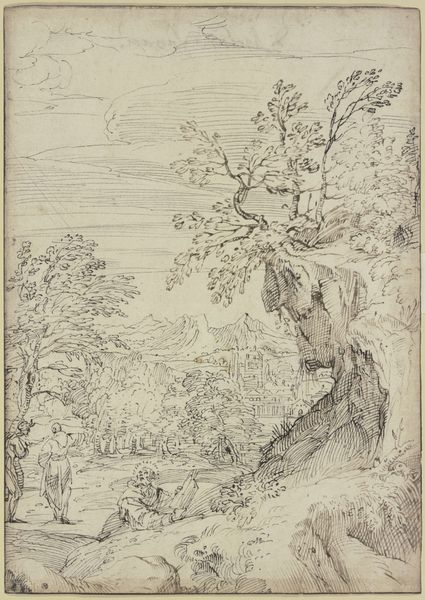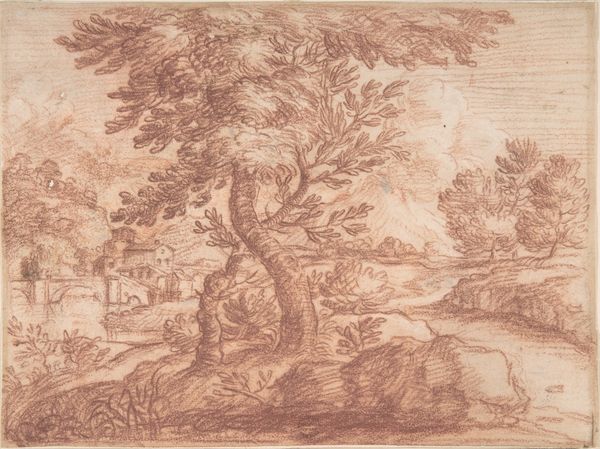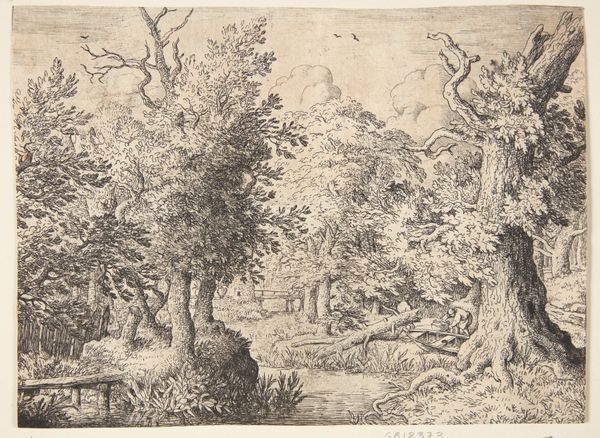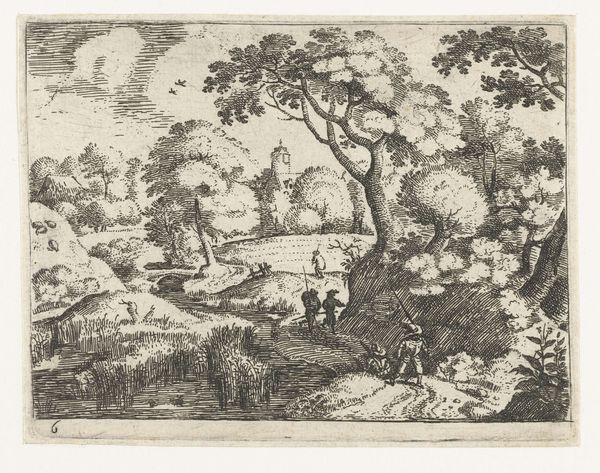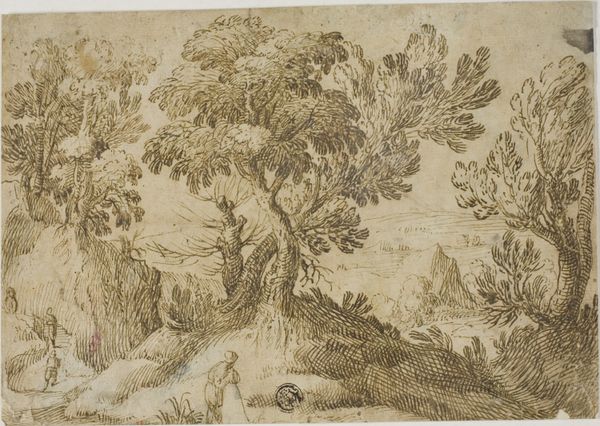
drawing, paper, ink, pen
#
drawing
#
ink painting
#
dutch-golden-age
#
pen sketch
#
landscape
#
paper
#
ink
#
pen
#
northern-renaissance
Dimensions: 7 11/16 x 11 3/4 in. (19.5 x 29.8 cm)
Copyright: Public Domain
Editor: Here we have Gillis van Coninxloo’s "Wooded Landscape," dating somewhere between 1600 and 1700. It’s a pen and ink drawing on paper, currently housed at the Metropolitan Museum of Art. I'm struck by how the artist uses these wispy, almost scribbled lines to create a sense of depth. What aspects of its composition stand out to you? Curator: The emphasis on line is indeed central to its success. Notice how Coninxloo establishes spatial recession not through linear perspective alone, but through a careful gradation of tonal values achieved through varied line density. The foreground trees are heavily delineated, creating a strong sense of presence, while the background dissolves into lighter, more diffuse marks. Consider the impact of these darker, more textured areas against the lighter ones; what effect does it have on the visual experience? Editor: I see what you mean! The contrast definitely makes the foreground feel closer, like we could almost reach out and touch the bark of the trees. It gives a tangible quality to the whole scene. Curator: Precisely. Furthermore, examine the internal structure of the trees themselves. The rhythmic patterns of branches and foliage, created through repeating motifs of line and form, give the composition an undeniable visual coherence. What sort of theoretical framework would you utilize when trying to unpack how visual patterns emerge and convey symbolic meaning within the artwork? Editor: Perhaps principles of semiotics? How these motifs serve as visual signifiers, hinting at meaning beyond what is explicitly depicted... I see the trees are not merely trees but perhaps also symbols of nature’s power. Curator: Indeed. This work provides an excellent case study in how an artist can transform simple materials into a complex and engaging visual experience through manipulating basic formal elements. Editor: It's amazing how much depth and complexity can be found simply by analyzing the artist’s choices in line, tone, and form! Curator: Agreed. Understanding the structural principles allows a deeper appreciation for its overall aesthetic impact.
Comments
No comments
Be the first to comment and join the conversation on the ultimate creative platform.
